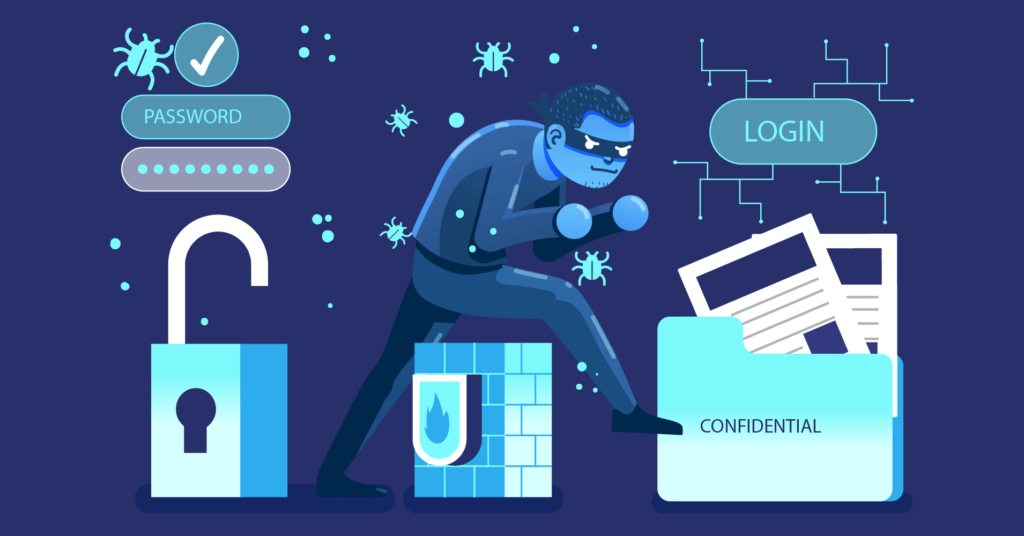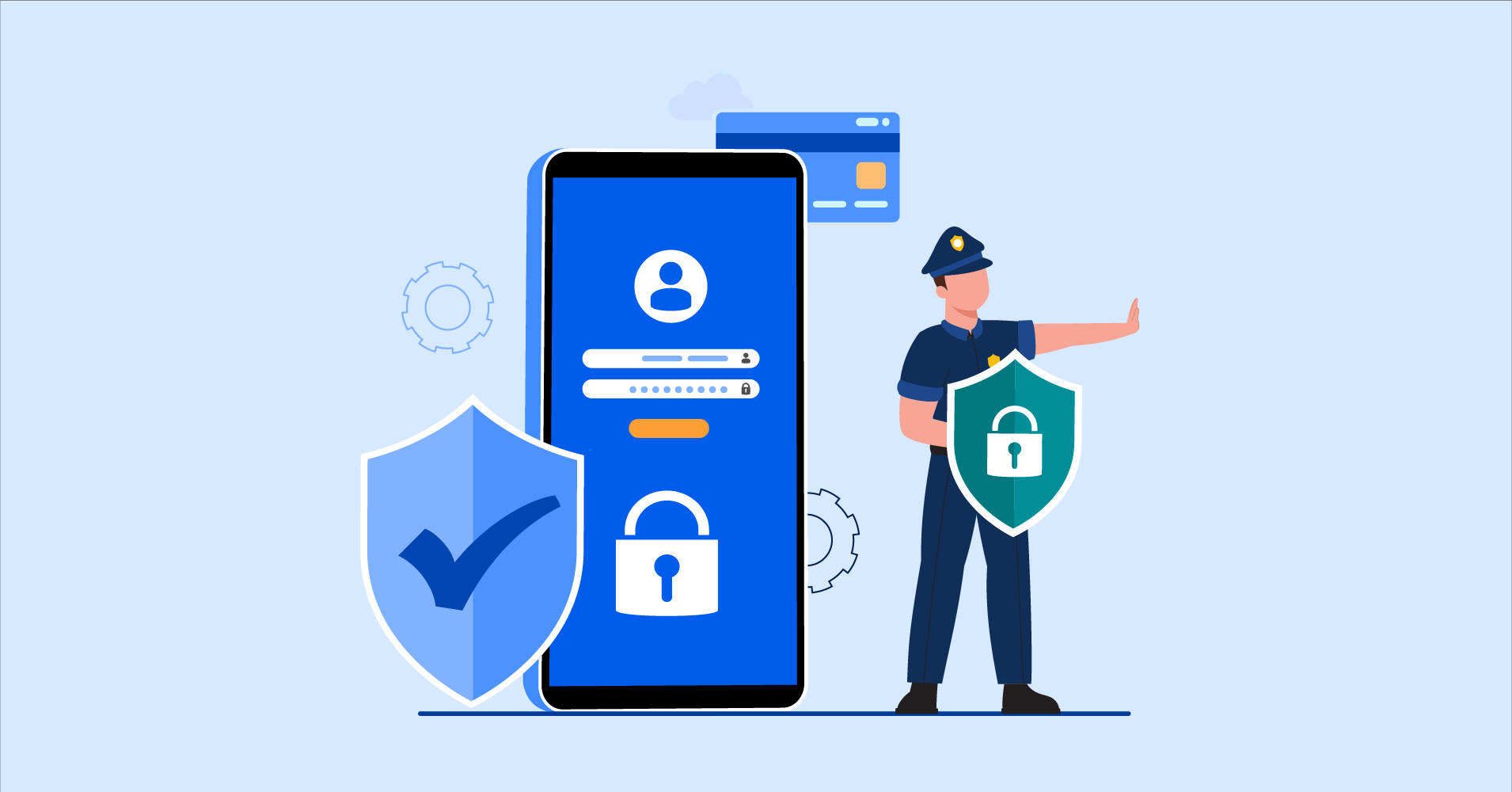WordPress is certainly the most popular content management system and not without reason. It is user-friendly, good for SEO, easy to customize, and you can easily add various features to your website.
No wonder why WordPress powers 35% of the internet.
WordPress has been kicking it for the past 17 years and has gained a lot of traction along the way. Primarily launched as a blogging platform, it has become the go-to platform for any industry.
Popularity can often come with a cost. Over the years, WordPress has been the target of hackers all over the world. According to a study by Sucuri, out of 8000 infected websites, 74% were built on WordPress.
Whether you are running a business website, personal blog, or an eCommerce site on WordPress, the security of your website should be a priority.
How Can Hacking Hurt Your Business?

Website hacking is spreading like fire in a forest. Hackers are now carrying out sophisticated operations within the close-knit web hacking community.
Cyber-attacks not only compromise your information but also all the data on your site, including your customer’s data. Inc.com reports that almost 60% of small businesses, which are hacked, go bankrupt within 6 months.
This is alarmingly dangerous.
Apart from this, hacking can hurt your business in numerous other ways:
- You or any of your customers can be victims of identity theft.
- The speed of your website slows down.
- Your website can completely crash.
- Your company’s reputation can take a big hit.
- You can lose your customers.
As it is said, “Precaution is better than cure.” Before anything like this happens, you should take steps to secure your WordPress site.
There can be many reasons due to which your site’s security is compromised. It can be a particular theme, plugin, weak passwords, missing security updates, social engineering, data leaks, etc.
Recently, we came across a fantastic Infographic by WP Clipboard, which presents different stats on WordPress security.

WordPress Security Statistics & Facts
Being the most widely used CMS platform across the globe, WordPress is a popular target for data breaches, hacking attempts, malware, and Trojans attacks.
Stats show that 8% of WordPress websites are hacked due to weak passwords. Therefore, it’s important to use complex passwords to ensure your website is not vulnerable. According to a report by Sucuri, 61% of infected WordPress websites were out of date.
And as per Melapress (formerly WP White Security), 30.95% of Alexa’s top 1 million websites are using the outdated version 3.6 of WordPress, making them vulnerable to hacking attempts. You must ensure your site is using the latest WordPress version. It will allow you to fix any bugs and keep your website secure.
According to WPScan, 52% of WordPress vulnerabilities are due to WordPress Plugins. And in one study, it was reported that 4000 websites were infected by malware due to a fake SEO plugin. Before installing any plugin, you must ensure it’s from a reliable source, compatible with the latest WordPress version and up to date.
According to WordFence, there are almost 90,000 attacks per minute on WordPress websites. In one study, it was found there are 3,972 known WordPress vulnerabilities. Out of which, 52% are from WordPress plugins, 37% are due to core WordPress files & 11% are from WordPress Themes.
Other attack vectors include:
- Database Injections
- Upload Exploitation
- Cross-Site Request
- Authentication Bypass
- Denial of Service
- Full Path Disclosure
According to WebsiteBuilder, Google blacklists 70,000 websites due to security issues every week. From the blacklisted sites, 50,000 are guilty of phishing while the rest are for malware issues.
You might be surprised that The Panama Paper Leak, in which 4.8 million emails were exploited, was due to WordPress Plugin vulnerability. The most common malware infections on WordPress are Backdoors, Drive-by downloads, Pharma hacks & Malicious redirects.
According to Sucuri,
- 83% of all the CMS based websites, which are hacked, are built on WordPress.
- 39% of hacked WordPress websites used outdated versions of the software.
- 90% of its cleanup requests are from WordPress
One study showed that out of all the WordPress websites, only 11.45% used SSL Encryption.
How to Ensure WordPress Security
Now you know how important it is to secure your WordPress site, let’s look at some guidelines on how to do it.
1. Avoid Using Common Passwords
The first shield against any hacking attempts is a strong password. This aspect is often overlooked while working on word press security. When you have a strong password, any hacking attempt can be avoided or at least delayed.
Avoid using common passwords, like; only numeric characters or alphabets. These may be easy to remember, but they are also easy to crack. Try using a combination of letters, numbers, and symbols. Moreover, using VPN and SSL jointly can be a good investment to secure your website from hacking.
2. Setup a two-step authentication login
Another effective way of making your website safe is to apply a two-factor authentication module (2FA). Anyone who wants to log in to your word press website would have to go through two barriers before he/she logins.
It can be a combination of a password and a secret question or a secret code sent to your phone (using Google Authenticator App).
3. Limit Login Attempts
Allowing a limited number of login attempts also helps improve your WordPress security. WordPress, by default, offers an unlimited number of login attempts. Still, you can use the WP Limit Login Attempts plugin to change that.
And in case you do not want to use a plugin, you can find several tutorials to do it manually (in back end coding). By limiting the number of login attempts, you decrease the success rate of your site being hacked. Hackers will get locked out before they complete the task.
4. Regularly Update Your WordPress Version
You need to develop the practice of updating your WordPress version. This is important because the developers also update the security features in every update, which helps secure your website. Also, don’t forget to update your plugins and themes.
5. Use WordPress Security Plugins
Programming and coding are one thing that’s being dramatically updated every day. It’s hard, almost impossible, to keep learning all the newbies in coding on a daily basis. And without this knowledge, you might not even notice a malware written into your code. For this reason, use WordPress security plugins.
There is a wide range of WordPress security plugins you can choose from. The best ones are updated regularly, which makes them capable of detecting any attempt of hacking and any addition to your code.
It’s a good idea to choose a security plugin that monitors and scans your website round the clock and protects your site from being penetrated by hacking attempts.
6. Avoid Using Nulled Themes
Isn’t it tempting to use something for free?
Well, WordPress has several professional themes, developed by high-end coders, BUT, they charge you for it. These themes provide unlimited customization, regular updates, etc.
Also, there are many free themes available on WordPress. But, the options in these themes are limited. Let’s face it; they are not that cool.
You can find cracked or nulled versions of premium themes in some places. It tempts almost everybody, and they ignore one basic fact. These nulled themes are hacked versions of premium themes and might be loaded with malicious malware. They help hackers penetrate your websites easily and destroy them. So, instead of saving a few bucks, save yourselves from losing a lot more.
7. Turn-off File Editing
While developing your WordPress site, you might have used the code editor function on your dashboard. For those who are new to WordPress, the code editor function helps you edit the code of your themes and plugins.
In short, it allows you to create a customized site. But, when you have finished developing your website, never forget to disable this functionality. Else, it may allow hackers to inject malware in your coding. This is one of the most ignored WordPress security measures.
8. Alter your WP-Login URL
WordPress has a default URL for all sites, which are developed using WordPress. The URL usually is (site.com/wp-admin). It makes it prone to external threats.
To prevent this, you can incorporate two-way verification or a secret question. Moreover, it’s a great idea to customize your URL as everyone knows the default one.
9. Create Backups Regularly
Let’s suppose; your website security has been compromised, what will be your first instinct? Naturally, it will be to secure all your data.
If so, why not take proactive measures for these “just-in-case” scenarios? Creating regular backups of your websites’ data and content is a good practice. It helps you bounce back fast if something goes wrong. So, never stop creating backups.
Wrapping Up
Securing your website is highly essential. Having a clear idea of the threats and the tools you can use to deal with those threats is of crucial importance. Your first and foremost priority should be to create an impenetrable firewall and security protocols.
On account of its popularity, WordPress is a frequent target for hackers. You must go an extra mile to ensure your site’s safety as it’s the online face of your business. A hack-proof site will surely embed trust in your potential customers, and hence, aid in the growth of your business.
Keep your website protected, and stay safe!



